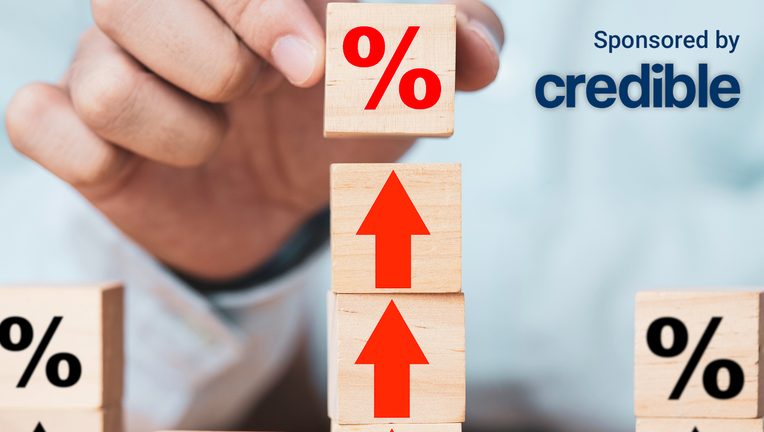Personal loan interest rates at near-record gap with credit cards, boosting savings opportunity

The interest rate on credit cards is much higher than it is for personal loans, according to the Federal Reserve Bank of St. Louis. (iStock)
As the Federal Reserve raises interest rates to lower inflation, the impact of the rate hikes may vary across different forms of debt. This disparity has led to a near-record gap between interest rates on personal loans and credit cards, according to the Federal Reserve Bank of St. Louis.
The average interest rate on credit cards was 16.27% as of August, while the average interest rate on personal loans was 10.16%, according to the latest data.
This marks one of the largest gaps between commercial bank interest rates on credit card plans and 24-month personal loans in the St. Louis Fed’s recorded history.
The news comes as Americans are holding significant amounts of credit card debt. Credit card balances saw a $46 billion increase in the second quarter of 2022, marking the largest quarterly spike in more than two decades, according to the Federal Reserve Bank of New York.
Moreover, half of Americans have fallen behind on their credit card debt amid high inflation, according to a survey.
If you have high-interest credit card debt, you could consider paying it off with a personal loan at a lower interest rate, saving you money each month. You can visit Credible to compare different personal loan lenders and rates without affecting your credit score.
PERSONAL LOAN INTEREST RATES CONTINUE TRENDING DOWN FOR 5-YEAR FIXED-RATE LOANS
Credit card interest rates increase to record high
The average interest rate on credit cards as of August, which is 16.27%, is the highest it's been in the history of the St. Louis Fed's report, which dates back to November 1994.
This is notable, in part, because having a higher interest rate on outstanding credit card balances can significantly inflate your overall debt total.
Americans’ total household debt has also risen as of late, increasing by $312 billion to reach $16.15 trillion in the second quarter of 2022, according to the New York Fed's report. Total household debt includes components like credit cards, mortgages and student loans.
"The second quarter of 2022 showed robust increases in mortgage, auto loan, and credit card balances, driven in part by rising prices," Joelle Scally, New York Fed administrator of the Center for Microeconomic Data, said.
If you’re struggling with outstanding debt, you can consolidate it with a personal loan at a lower interest rate. To see if a debt consolidation loan is right for you, you can speak to a personal loan expert at Credible and get all your questions answered.
MANY COLLEGE STUDENTS WITH CREDIT CARDS HAVE DEBT, SURVEY SAYS
Fed may keep raising interest rates in 2023 to reduce inflation
Inflation rose by 8.2% year-over-year in September, according to the Bureau of Labor Statistics (BLS) — a far reach from the Fed’s inflation target of 2%.
To slow inflation, the Fed may keep raising rates in 2022 and into 2023. This move can affect interest rates across several financial products. For example, the average interest rate on a 24-month personal loan increased slightly to 10.16% in August, up from 8.73% in May.
If you want to take advantage of current interest rates before they rise, you could consider using a personal loan to consolidate your debt at a lower rate. Visit the Credible marketplace to compare personal loan lenders without affecting your credit score.
AVERAGE MILLENNIAL OWES MORE THAN $100K IN NON-MORTGAGE DEBT: SURVEY
Have a finance-related question, but don't know who to ask? Email The Credible Money Expert at moneyexpert@credible.com and your question might be answered by Credible in our Money Expert column.

